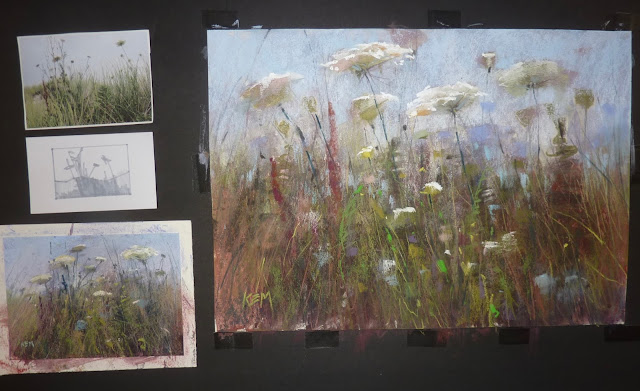'Looking In' 12x17 pastel ©Karen Margulis available $225
My grass painting has evolved. I have gone through the stages from painting every blade of grass with stiff fence-like marks to big swaths of green with no detail. As my style evolves the grass goes along for the ride! Lately I am interested in getting more depth in my grassy areas of a painting. Even in closeup viewpoints I want the viewer to feel like they could put their hand in the grass and not just on the top layer. To do this I have to build up many layers of complexity.
You can see this painting in a video demo on my Patreon Page.
Here are a few tips to help your treatment of grass in a painting.
- Avoid painting individual blades of grass. Think instead of the big underlying shapes or blocks of grass. Pull out and paint a few blades. Allow the viewer to participate and fill in the rest. A few well placed blades will read as grass.
- Using the long edge of a soft square pastel use the press and lift method to leave a print of a piece of grass. Do a few but be careful not too have them spaced too evenly or all marching in the same direction.
- Use the top edge of a harder round pastel and roll it leaving a broken line of grass.
- Lay down a block of color and then draw some lines of grass with a thin hard pastel. Draw a SENSITIVE line. Have a light responsive touch so the line isn't to thick or regular. Practice sensitive lines.
- Paint on a heavily textured surface. Glide the pastel over the texture and it will look like grasses without putting in a blade!
- Underpainting! I like to use an alcohol, turpenoid or oil stain and allow the drips to create the grasses.



No comments:
Post a Comment